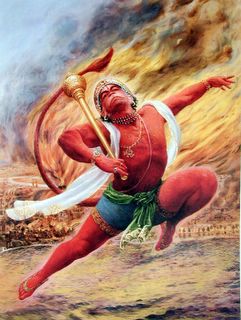The Fifth Day of Diwali - Bhai Beej
The fifth day of Deepavali or Diwali is celebrated as Bhaiya Dooj, popularly know as Bhai Dooj. The name itself denotes the day of the festival i.e it falls on Dooj, the second day after the new moon. This day Yamaraj went to his sister's house who put an auspicious mark on his forehead for his welfare. Thus, on this day sisters perform puja for their brothers safety and well being. Brothers in return give gifts to their sisters as a token of love.
Another version is after killing Narakasur, Lord Krishna, went to his sister Subhadra who welcomed him in the traditional way by showing him a light and putting on his forehead a tilak of her sisterly protection. Another myth behind this begins as when Bhagawaan Mahavir found nirvana, his brother Raja Nandivardhan was distressed because he missed him and was comforted by his sister Sudarshana. Since then, women have been revered during this festival.
The festival of Diwali is not complete without "Bhaiyya-Duj" in the Hindi-speaking belt, "Bhav--Bij" in the Marathi-speaking communities, "Bhai Phota" to the Bengalees and in Nepal by the name of "Bhai-Tika".
Diwali is a personal, people-oriented festival when enmities are forgotten, families and friends meet, enjoy and establish a word of closeness. Reflecting this essence, Bhai dooj has its own importance in continuing to maintain the love between brothers and sisters for it is the day of food-sharing, gift-giving and reaching out to the inner most depths of the hearts.
As a festival of light and beauty it encourages artistic expressions through home-decorations stage-plays, elocution competitions singing and dancing programmes, making gift items and making delectable sweets thereby discovering new talents of younger people. As a result innumerable communities with varying cultures and customs mingle together to make Bhai Dooj celebrations a very happy occasion for all.
The fifth day of Deepavali or Diwali is celebrated as Bhaiya Dooj, popularly know as Bhai Dooj. The name itself denotes the day of the festival i.e it falls on Dooj, the second day after the new moon. This day Yamaraj went to his sister's house who put an auspicious mark on his forehead for his welfare. Thus, on this day sisters perform puja for their brothers safety and well being. Brothers in return give gifts to their sisters as a token of love.
Another version is after killing Narakasur, Lord Krishna, went to his sister Subhadra who welcomed him in the traditional way by showing him a light and putting on his forehead a tilak of her sisterly protection. Another myth behind this begins as when Bhagawaan Mahavir found nirvana, his brother Raja Nandivardhan was distressed because he missed him and was comforted by his sister Sudarshana. Since then, women have been revered during this festival.
The festival of Diwali is not complete without "Bhaiyya-Duj" in the Hindi-speaking belt, "Bhav--Bij" in the Marathi-speaking communities, "Bhai Phota" to the Bengalees and in Nepal by the name of "Bhai-Tika".
Diwali is a personal, people-oriented festival when enmities are forgotten, families and friends meet, enjoy and establish a word of closeness. Reflecting this essence, Bhai dooj has its own importance in continuing to maintain the love between brothers and sisters for it is the day of food-sharing, gift-giving and reaching out to the inner most depths of the hearts.
As a festival of light and beauty it encourages artistic expressions through home-decorations stage-plays, elocution competitions singing and dancing programmes, making gift items and making delectable sweets thereby discovering new talents of younger people. As a result innumerable communities with varying cultures and customs mingle together to make Bhai Dooj celebrations a very happy occasion for all.
